Introduction: Mary Harrell-Sesniak is a genealogist, author and editor with a strong technology background. In this blog article, Mary shows how small references and brief mentions in obituaries can provide clues to help your family history research.
Obituaries are the stalwart basis for genealogy research – but many family historians miss clues that are crying out for follow-up searches. Let’s look at some early obituaries from GenealogyBank’s Historical Newspaper Archives and see what lessons we can learn from them.
Genealogy Tip: When you find an obituary, read it differently to uncover its clues.
Instead of just focusing on names and dates, look for associations – such as locations and organizations. Take what you observe and use it in follow-up queries.
Take for example this 19th century obituary – really just a trio of early American death notices. It’s fairly typical for the time period, when a person’s entire existence seemed to be summarized in 1-3 lines.
This obituary briefly mentions:
- the Shepards (Julia Ann and T. W.)
- Abel Chapin
- the Taylors (James and his wife)
But there’s more to uncover for each one of the deceased listed here.


#1 Julia Ann Shepard
Julia Ann Shepard’s young passing was at one year old. We learn the location where she died and her father’s name, albeit abbreviated.
Starting with Findagrave, a search located her at memorial #89027833.
Her Findagrave page had a small date error reporting that she passed in December rather than on October 15. So I did what many colleagues do, and sent the correction with a reason why the information was incorrect. It is now noted on the record.
#2 T. W. Shepard
I thought Julia Ann’s father might be Thomas W. Shepard. A search for Thomas or Thomas W. Shepard located little in GenealogyBank, so I resorted to the biggest clue of all: how he was named in the daughter’s death notice.
Turns out T. W. really did go by just his initials. This search found him.
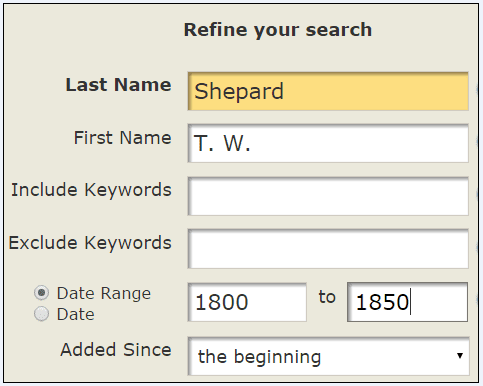

He turned out to be an interesting fellow.
Among his many accomplishments was the inspiration for the New England Farmer and Horticultural Journal, published from 1822-1846.
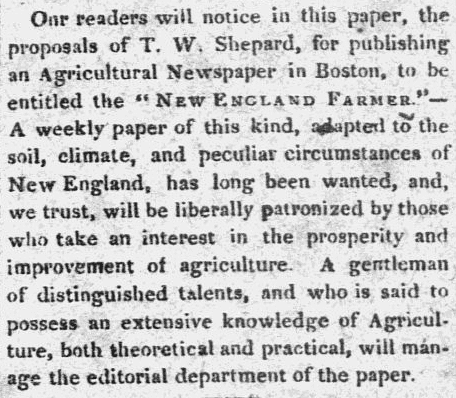

This journal is mentioned repeatedly in GenealogyBank’s Historical Newspaper Archives. As one of the earliest agricultural journals, it provides researchers with unparalleled insight into 19th century New England agriculture.
Another tidbit I unearthed about T. W. in the newspaper archives pertains to his religion. In 1821, he assisted in the publication of a sermon called “The Guilt and Danger of Religious Error.”


What I wasn’t able to locate was T. W. Shepard’s obituary. Perhaps one of our readers will be able to find it.
#3 Col. Abel Chapin
The most intriguing information about Col. Abel Chapin is his rank. Can GenealogyBank confirm his military rank and let us know more about him?
A 1954 report from the Daughters of the American Revolution in GenealogyBank’s Historical Documents section reports that he served in Charles Chapin’s regiment in Ticonderoga, New York, during the American Revolutionary War.
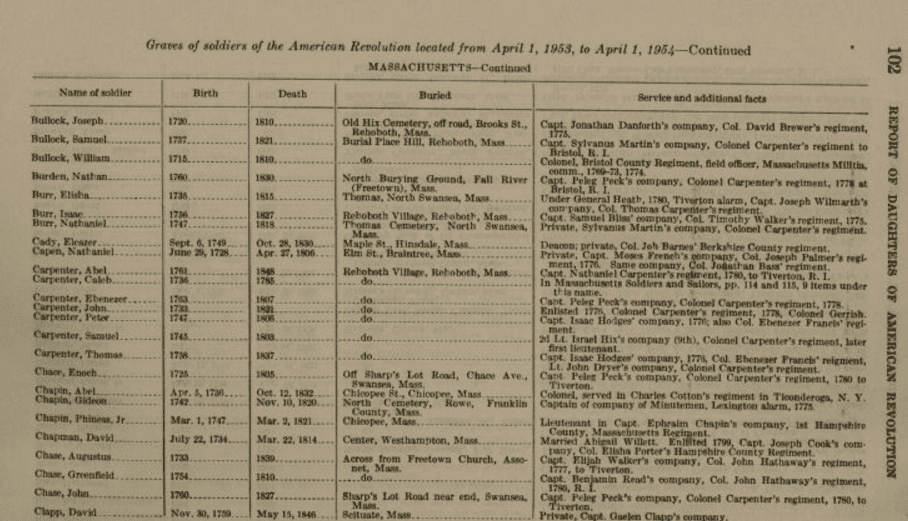

His Findagrave memorial notes that he was also in the War of 1812 and Shay’s Rebellion.
Old Massachusetts newspapers are sprinkled with various tidbits about Col. Abel Chapin. One fact I found amusing concerned his oxen. His largest ox weighed 3,028 pounds!


According to a Google search quoting Tiller’s International: “Depending on the breed, an ox can weigh anywhere from about 500 to 3,000 pounds,” so Chapin’s ox was a mighty large animal – even by today’s standards.
#4 Rev. James Taylor and wife
According to the death notice, the Rev. James Taylor and his unnamed wife died within five days of each other, on 11October and 16 October, 1831.
However, curiosity makes one wonder if the close proximity of their deaths was a coincidence? Did she die of a broken heart or was there another cause?
Their online Findagrave memorials at Riverside Cemetery report her name was Elizabeth Terry and they both died of typhoid fever. A quick check of similar obituaries shows that typhus was prevalent in the area during this time period.
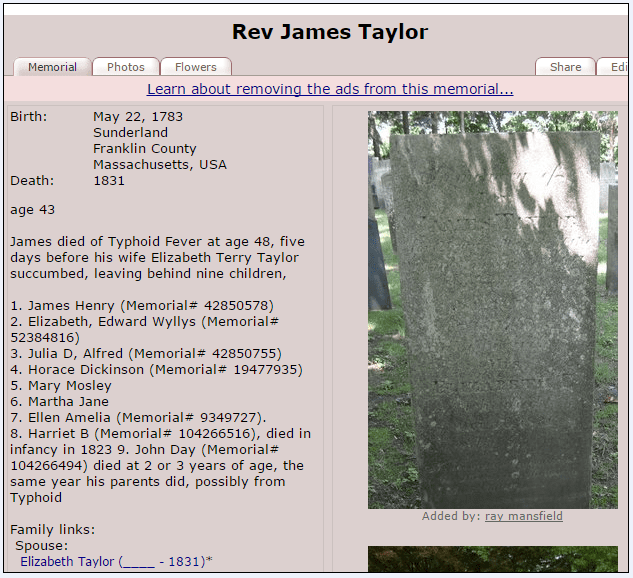

I noticed that their Findagrave memorial does not show the exact date of death, so I submitted a correction which will hopefully be addressed.
Searching in GenealogyBank’s Historical Newspaper Archives produced a few more items about this family, such as this report of a church service in which Rev. Taylor gave the sermon.
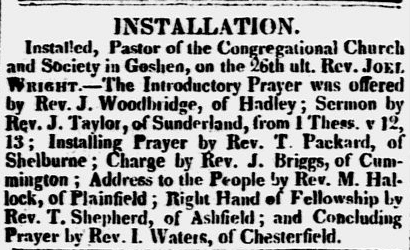

In some newspaper articles he was referred to as James Taylor, but others simply referred to him by his initials. Several newspaper notices report that he officiated at other ordinations.
I even found an 1807 newspaper article about his own ordination. How cool is that!


So there you have it: a virtual tale of four obituary discoveries, starting with the briefest of mentions in a death notice that led to follow-up searches uncovering more of their stories. Please share in the comments section how obituary clues have led you to other genealogical discoveries.
Note: FamilySearch International (FamilySearch.org) and GenealogyBank are partnering to make over a billion records from recent and historical obituaries searchable online. The tremendous undertaking will make a billion records from over 100 million U.S. newspaper obituaries readily searchable online. The newspapers are from all 50 states and cover the period 1730 to the present. Find out more at: https://www.genealogybank.com/family-search/
Related Obituary Articles:
- Massive Online U.S. Obituaries Project Will Make It Easier to Find Your Ancestors
- Researching Recent Obituaries to Extend My Family Tree
- Peculiar, Unusual, and Stranger-than-Fiction Obituaries
- Pearls of Life Wisdom from Pink Mullaney’s Obituary
- Truly Personal Obituaries from the Recent Obituary Archives

Mary Harrell-Sesniak wrote, “[T]hey both died of typhoid fever. A quick check of similar obituaries shows that typhus was prevalent in the area during this time period.” It should be noted that typhus and typhoid fever are two entirely different diseases.
T,
You make an interesting point about the difference between typhus and typhoid fever.
While reading early papers, the two terms were often interchanged, so it would have read better if I had described it as “this disease” rather than typhus. For an example, see the Spectactor Newspaper of 26 August 1807, Page 3, which reported that four people had died of typhus fever.
Thank you.
Mary